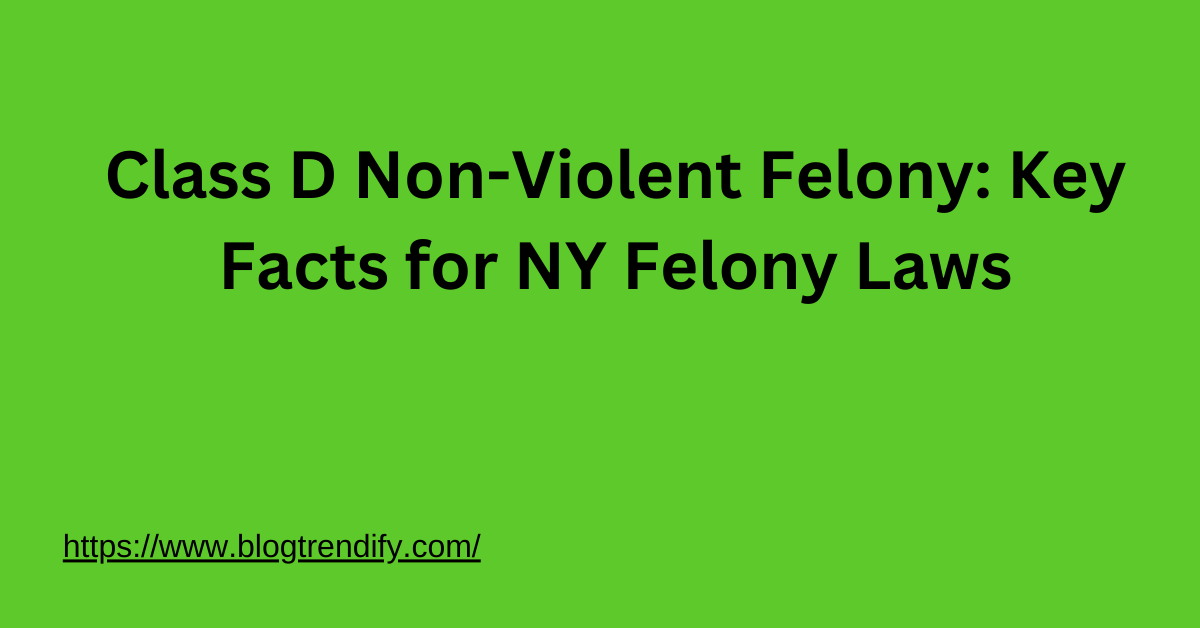Introduction
Table of Contents
ToggleClass D violent felony in New York are considered serious crimes that involve direct physical harm or the threat of harm. While they are not as severe as Class A or B felonies, these offenses can still result in significant legal consequences, including lengthy prison sentences. This article will explain what Class D violent felonies are, provide examples, outline potential penalties, and discuss legal defenses that might be available to defendants facing these charges.
What Are Class D Violent Felonies?
Class D violent felonies in New York are mid-level crimes that involve the use or threat of violence but are considered less severe than higher-level felonies. These crimes typically result in harm to victims or the potential for significant harm. Despite the “violent” designation, many Class D felonies may involve non-deadly force or harm.
Examples of Class D Violent Felonies
1. Assault in the Second Degree
Assault in the second degree is one of the most common Class D violent felonies. It involves intentionally causing serious physical injury to another person.
Elements of the Crime
- Intentional harm
- Serious physical injury to the victim
2. Menacing in the Second Degree
This crime occurs when someone intentionally places another person in fear of imminent serious physical injury by using a weapon or displaying a dangerous instrument.
Key Aspects
- Use of a weapon or dangerous object
- Victim’s reasonable fear of harm
3. Criminal Possession of a Weapon in the Fourth Degree
Criminal possession of a weapon in the fourth degree occurs when a person knowingly possesses a weapon, such as a firearm, without proper authorization or permits.
Criteria for the Crime
- Possession of a weapon
- Lack of a lawful permit or authorization
4. Criminal Mischief in the Second Degree
This offense involves intentionally damaging another person’s property, including causing substantial damage or interfering with another person’s ability to use their property.
Types of Damage
- Destroying property
- Rendering property useless or inoperable
5. Robbery in the Third Degree
Robbery in the third degree is a violent crime involving the forcible theft of property. It can occur through threats or physical force.
Key Elements
- Use of force or intimidation
- Stealing property from another person

Class D Violent Felony: Understanding NY Felony Classes
Penalties for Class D Violent Felonies
1. Prison Sentences
Class D violent felonies carry significant prison sentences, typically ranging from 1 to 7 years. The exact sentence will depend on factors like prior criminal history, the severity of the offense, and the circumstances of the crime.
2. Fines and Restitution
Defendants convicted of Class D violent felonies may be required to pay fines or restitution to the victim for financial losses incurred due to the crime.
3. Parole and Probation
In some cases, offenders may be eligible for parole or probation after serving a portion of their sentence.
Legal Defenses for Class D Violent Felonies
1. Lack of Intent
If a defendant did not intend to cause harm, they may be able to argue that the crime was not intentional. This defense is often used in cases involving assault or criminal mischief.
2. Self-Defense
If a defendant was acting in self-defense or to protect others from imminent harm, this may serve as a valid defense to a violent crime charge.
3. Insufficient Evidence
If the prosecution cannot provide enough evidence to prove the crime beyond a reasonable doubt, the charges may be reduced or dismissed.
4. False Allegations
In some cases, defendants may claim that the charges are based on false allegations or misunderstandings.
Importance of Legal Representation
Facing a Class D violent felony charge can be overwhelming, and the consequences of a conviction are serious. It’s essential for defendants to seek legal representation to navigate the criminal justice system. An experienced lawyer can help build a strong defense, negotiate plea deals, or advocate for reduced sentences based on mitigating factors.
Conclusion
Class D violent felonies in New York may not be as severe as other felony classifications, but they still carry significant penalties, including prison time and fines. Understanding the charges, potential defenses, and legal processes involved is crucial for anyone facing these charges. With the help of skilled legal counsel, defendants can work to achieve the best possible outcome in their case.
FAQs
1. What is the penalty for a Class D violent felony?
Class D violent felonies carry prison sentences ranging from 1 to 7 years, depending on the severity of the offense and other factors.
2. Can a Class D violent felony conviction be appealed?
Yes, a convicted individual may appeal their Class D felony conviction if they believe there were legal errors during their trial.
3. What are mitigating factors that can reduce my sentence for a Class D violent felony?
Mitigating factors include a lack of prior criminal history, a clean record, or the presence of extenuating circumstances, such as acting in self-defense.
4. Is probation possible for a Class D violent felony?
In some cases, offenders may be eligible for probation after serving part of their prison sentence.
5. How does a Class D violent felony affect employment opportunities?
A conviction for a Class D violent felony may impact employment opportunities, especially in fields that require background checks.



